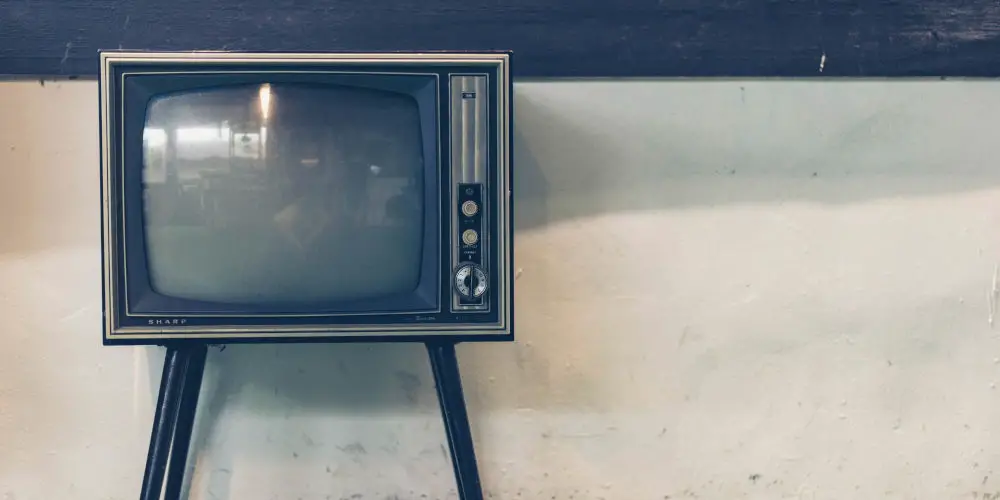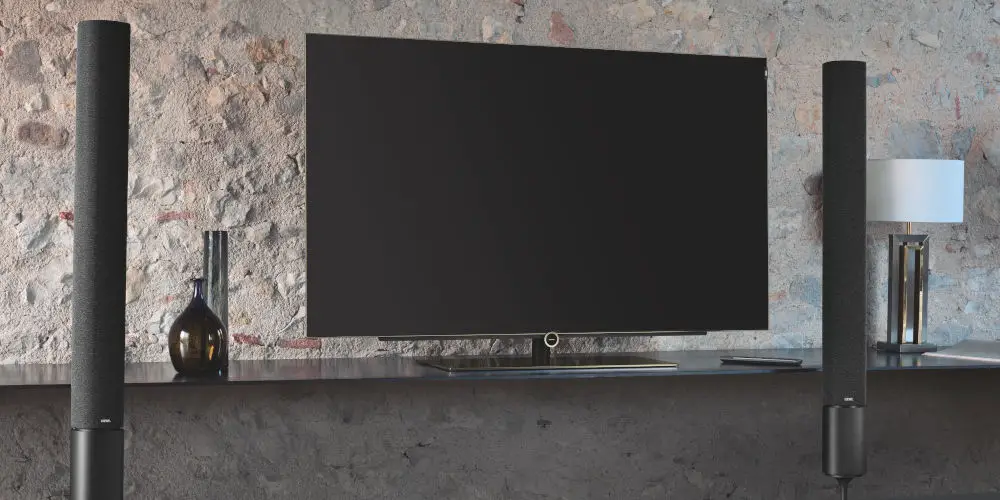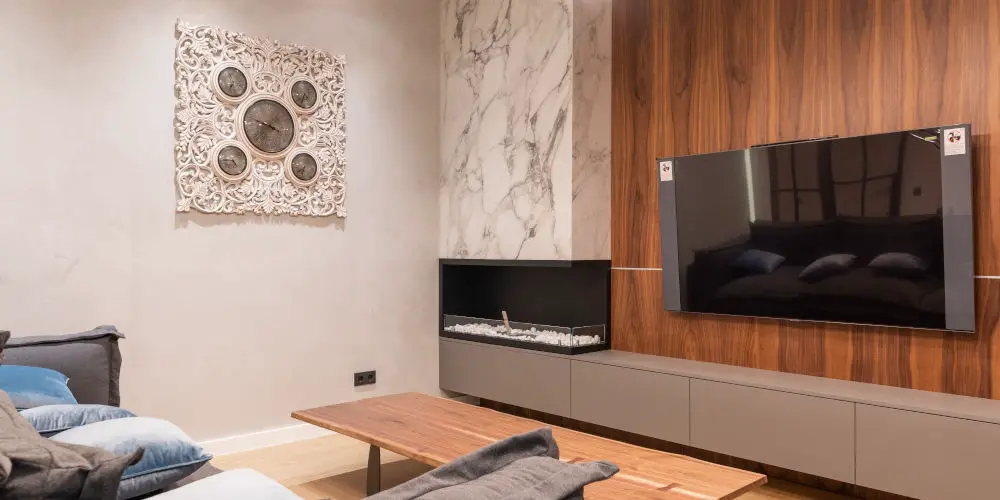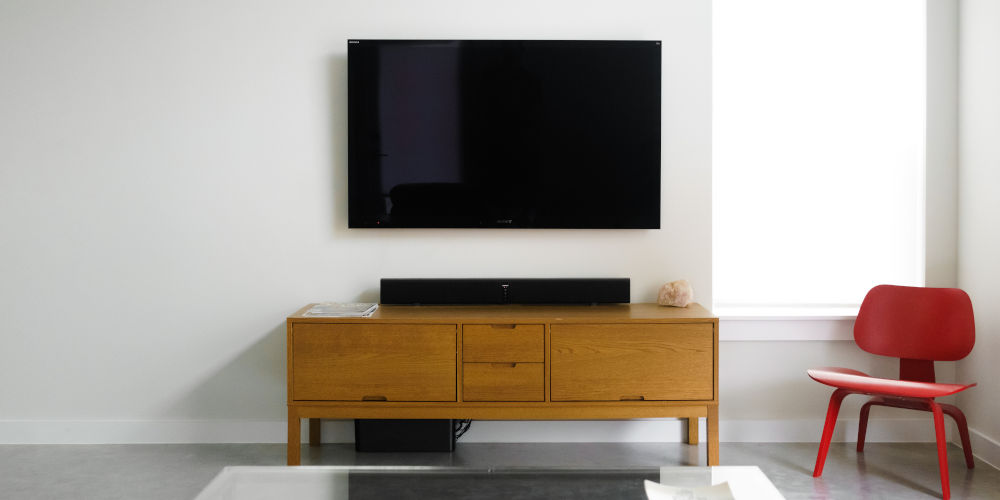Why are TV speakers so bad? And how to fix it!

After spending what can only be described as a small fortune on a new 4K TV, you plug it in and hear a thin, lifeless sound. Disappointed doesn’t begin to sum up how you feel. You wonder why are TV speakers so bad? Is there an easy fix?
The problem lies in part with the consumer. We increasingly want thinner Televisions that blend into the wall or background. However, with a lack of space to move, speakers fail to fully reproduce sounds, leading to poor overall sound.
Add to this that most TVs have rear-facing speakers. Before the sound reaches your ear, it has to bounce off a wall. What you end up hearing can sound slightly distorted or a millisecond behind the visual.
So what can we do about poor TV sound? Thankfully, there are plenty of affordable solutions. Before we get to them, let’s explore just why are TV speakers so bad?!
Do TV manufacturers care about sound?
Just by looking at the latest TV, you could be mistaken into believing that the manufacturers care more about the visuals than the sound. You’ll see a shopping list length of specs, including HDR, 4K, QLED, LED, Freeview, and more.
It’s only when you get past the first page, that you’ll start to see the audio specifications. These typically include Dolby Atmos or DTS:X. What they fail to mention is the speaker location, and sometimes even what audio outputs are available.
Electronic brands know without excellent sound, the video doesn’t look as good as it could. Watching TV on mute, you only understand, at best, 50% of what’s happening. Only listening to the TV is no different than turning on the radio, but with the added frustration of not seeing what’s going on.
A reason why are TV speakers are so bad is consumer demand. We want the thinnest possible, most technologically advanced television with a little bezel. The trade-off is that the speakers have been relegated to the rear and in a tight space. Neither of these aspects creates earth-shattering sound.

Are users frustrated with poor TV sound?
You only need to look at the number of soundbar and external speaker options available to conclude that many users are frustrated by the poor sound of their TV.
I often wonder if TVs would be better off without built-in speakers, allowing people to choose a better option for audio or if electronic brands should build soundbars into their televisions at the bottom. Granted, that’s not the only soundbar placement option available.
It could be that many suffer poor sound from their TV as they don’t know any better and haven’t experimented with external speakers of some sort. Of course, the brands and retailers could do a lot more to demonstrate how to get the best audio, both in terms of speakers and their placement.
So if you feel that your TV doesn’t produce the best audio experience, then you are not alone nor it is completely your fault.
Understand the science behind good sound
Without turning this in a lecture, it’s worth understanding some of the science behind good sound. Armed with this new knowledge, you’ll be able to improve your TV’s sound and understand why the current speakers sound terrible.
A speaker at its most basic is a piece of paper, a magnet and some copper wire. There’s plenty of YouTube videos showing how to build a speaker using these common materials. Within a few minutes, you can build your own speaker and start to learn more about how speakers work.
Speakers work by converting electrical energy into mechanical energy (motion). The mechanical energy compresses air and converts the motion into sound energy. Without enough space for the magnet in the speaker to vibrate, the audio will sound muffled.
Open up any bookshelf speaker, and you’ll a large empty box with the speaker attached to one face. As the magnet moves the paper cone, the air inside begins to vibrate around the box amplifies the sound further.
Now compare this to your TV. If you remove the backplate, you’ll see two small speakers that sit in a tiny space and are unable to move far, limiting the amount of air they can push out. All of these factors add up to a muffled and weak sound.
Another element to consider is the speaker position. With a Hi-Fi or a boombox, you sit in front of the speakers. They move the air directly in front of you. What you hear is immediate sound.
Let’s compare this to the average TV. The consumer wants little or no bezel, and so the speakers are rear-mounted. Before any sound hits your ears, it has to bounce off a rear wall. Audio can then sound muffled or slightly distorted.

How to fix poor TV sound
There are plenty of ways to improve your TV sound and create a superb overall viewing experience. Here are our top four ideas.
Old Hi-Fi
If you have an old Hi-Fi, you should be able to connect it to your TV’s headphones output using a single cable. As the cheapest of our options, buying the right AV cable will cost a few quid.
Your TV is likely to have a mini-jack headphone socket or better yet, dual phonos. You might find your Hi-Fi has a mini-jack aux input or dual phonos input. Depending on the sockets, you might need a mini-jack to mini-jack cable, or a mini-jack to dual phonos cable, or dual phonos to dual phonos cable.
Soundbar
You can buy a decent sounding soundbar for under £100 that can dramatically improve your TV’s sound in minutes. If you have a bit more cash to spend, then invest in a 2.1 channel soundbar with subwoofer as it produces audio that’s close to a surround sound system.
Just like with an old Hi-Fi you might need a phono or mini-jack cable depending on your TV. Thankfully most soundbars work using an optical cable or HDMI cable. Just check before you buy that your soundbar comes with the correct cable as many arrive without.
And don’t try to use your soundbar and TV speakers together, the results are terrible!
Bluetooth speakers or headphones
You might prefer to use Bluetooth headphones or wireless speakers, as both give you more flexibility over traditional speakers. There is a catch, your TV needs to have Bluetooth capabilities, otherwise, you’ll need to use a Bluetooth transmitter.
Simply pair your TV with Bluetooth speakers. or headphones and you can instantly enjoy a better audio experience.
Surround sound system
Not your cheap option, you could replace your TV muffled sound with a full cinema experience. You will have to buy a 5.1 speaker package and an AV receiver, but the new sound quality will be vastly superior.

So, why are TV speakers so bad?
It’s easy to learn the reasons why are TV speakers so bad. Luckily, a variety of solutions are available and most are highly affordable. And you should have to wait until your blow your TV’s speakers before upgrading!
As consumers demand wafer-thin TVs, there isn’t enough room for the speakers to move air, thus they create a muffled sound. Compounding this problem is the rear location of the speakers. Any sound has to bounce off a rear wall and be reflected at you before reaching your ears.
Solving poor TV is easy as you could use an old Hi-Fi, invest in a soundbar, pair your Bluetooth speakers or headphones or treat yourself to a massive upgrade with a 5.1 surround sound system.
So the next time you wonder why are TV speakers so bad sounding, you now know why, but more importantly, how to solve the issue.




